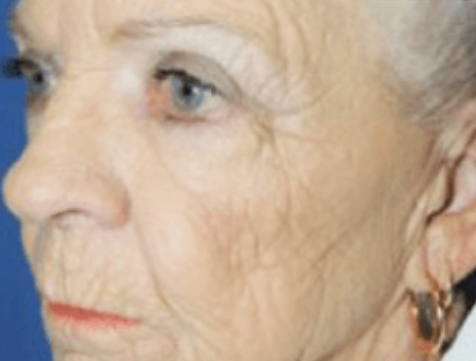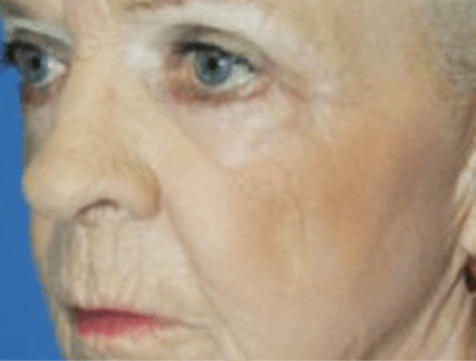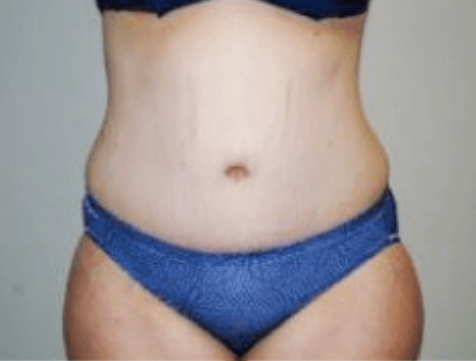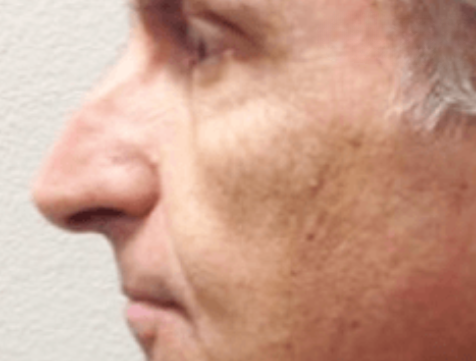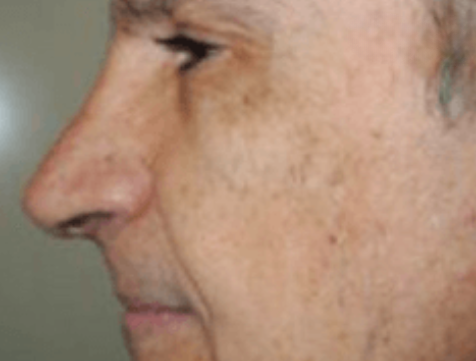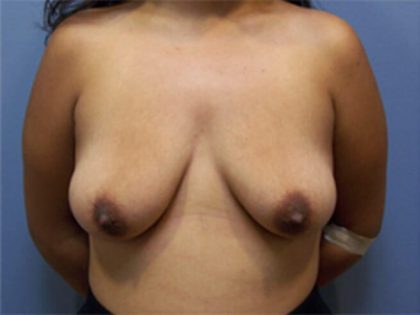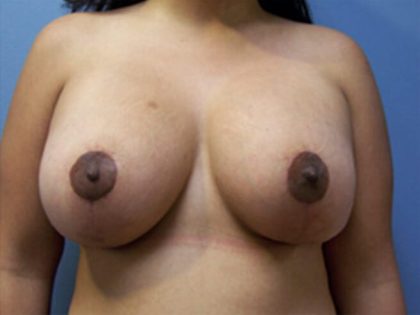Breast Lift with Augmentation
Conveniently located to serve the areas of Newport Beach, CA

After childbirth, weight reduction or with aging, the breasts may begin to sag and loose volume. Dr. Bandy evaluates each person to determine the current bra size, the desired size and how much drooping or “ptosis” of the breast tissue you have. Often times if you desire to have larger breasts, a breast augmentation is performed. If there is considerable sagging or ptosis, she may recommend a breast lift or “mastopexy” at the same time to achieve your best results. If no increase in breast size is desired, a breast lift or mastopexy will produce a lifted, youthful breast. Dr. Bandy specializes in minimal incision breast augmentation and mastopexy to minimize scarring. Learn more about Breast Lift with Augmentation at our Newport Beach, Orange County office.
Schedule A ConsultationContents
- 1 Before and After Photos
- 2 Who is Breast Lift (mastopexy) with Augmentation recommended for?
- 3 Pre-operation
- 4 Post-operation
- 5 Costs
- 6 Recovery
- 7 FAQ
- 7.1 What is Breast Lift?
- 7.2 How long is the Breast Lift surgery?
- 7.3 Are there different types of Breast Lift procedures?
- 7.4 What type of incision approaches are there for Breast Lift?
- 7.5 Are there any other procedures commonly performed along with Breast Lift?
- 7.6 Are there any new technological advances or medicine for Breast Lift?
- 7.7 What if I experience any complications?
- 7.8 Final thoughts on Breast Lift?
- 7.9 What is Breast Augmentation?
- 7.10 What is the difference between silicone and saline BREAST implants?
- 7.11 Should I choose silicone or saline BREAST implants?
- 7.12 How long does a Breast Augmentation procedure take?
- 7.13 Should the breast implant be placed in front of the muscle or behind the muscle?
- 7.14 What type of Breast Augmentation Incisions does Dr. Bandy perform?
- 7.15 What are breast augmentation complications and possible patient complaints?
- 7.16 What if I experience any complications?
Before and After Photos
Who is Breast Lift (mastopexy) with Augmentation recommended for?
Breast lift with augmentation is recommended for anyone with excess skin laxity wanting the breast tissue uplifted, along with either wanting to increase the size of the breast or create more upper pole fullness of the breast.
Pre-operation
How can I prepare?
A patient can prepare for a breast lift procedure by getting on a good diet and beginning a vitamin protocol (provided by Dr. Bandy) to aid their body in healing. We recommend accomplishing all house chores prior to surgery that would require a patient to lift anything over 5 pounds or push or pull anything heavy. During your pre-operative appointment our nurses will go over all necessary steps to prepare for your surgery.
Will anesthesia be administered?
A breast lift procedure can be performed under a general or a local anesthesia. Whether a patient is a good candidate for local anesthesia will depend on a number of factors. If the patient is an anxious person, or if the patient is having the breast lift performed at the same time as another procedure, general anesthesia is recommended and sometimes required.
Is painful?
A breast lift procedure by itself is generally not a painful procedure. Patients may feel some tenderness along the incision for the first few weeks, but this should subside by week 3.
What if I am sick before?
If a patient is noted to be sick prior to a procedure, it is advised to contact Dr. Bandy’s office immediately to discuss the best way to move forward.
How long before I see results?
Each and every patient is different and their idea of what is ideal will vary. An ideal result generally is a round areola that is centered on the breast mound. Results can be seen immediately following the surgery, however as with any breast surgery, the tissues will stretch & settle over several months, resulting in the final and most appealing outcome.
Post-operation
Is scarring expected after?
A breast lift will produce a scar. We aim for the scar to heal to a pencil thin line, however, each body heals differently. The coloring of a scar depends upon the natural color of the patient’s skin and how their own body heals. Our office sells and recommends a medical-grade silicone gel scar cream to apply to the incisions once fully healed to aid in reducing the appearance of the scar.
Can I drive home after?
It is always recommended to have someone assist you in getting home or to your recovery center. If a patient does not have anyone that can assist them at home, we do have a post operative recovery center that we work with that will pick up the patient from our facility.
Should I try avoiding touching the area after?
A patient will have surgical tapes covering their incisions and these tapes will remain in place for a few weeks. It is recommended that a patient not touch the incisions until they are healed.
What activity should I refrain from after?
A breast lift patient is advised to discontinue upper body exercise for 4 weeks while the incisions are healing. We also recommend that a patient not go take baths or swim for at least 6 weeks after surgery.
Do I need to take any medication after?
A patient is usually prescribed an antibiotic and a pain medication. If a patient is undergoing a general anesthesia, sometimes they are prescribed an anti-nausea medication to combat any feelings of nausea that some patients experience after having a general anesthesia.
Costs
What is the average cost?
Breast lift with augmentation has a price range dependent upon the complexity of the case. In order to obtain an accurate price for your surgery we advise meeting with Dr. Bandy for a consultation.
Are there financing options?
The patient has multiple financing options. For example, the patient can pay for the surgery on credit card, and make monthly payments back to their credit card. Additionally, CareCredit is a financing company specific for cosmetic surgery; patients can apply for CareCredit, and there are multiple options for CareCredit. Sometimes, patients opt to make payments directly to the office. This is a prepayment plan where a patient would pay until he or she pays the entire balance for the surgery; then, they would have their surgery.
Recovery
What is the recovery time and the healing process?
Increase in breast size and uplifting of the breast can be seen immediately, however, it takes 4-6 weeks or longer until the swelling decreases and the implants settle into the breast pocket. Patients typically patients are required to avoid lifting more than 5 lbs within 1 week after surgery, and avoid lifting more than 15 lbs within 4 weeks after surgery. Also, patients are advised to avoid strenuous activity for at least 4 weeks.
Is there a post-operative recovery facility that you recommend?
We do have a post operative recovery facility that we refer our patients to in Orange County, CA and Los Angeles, CA. In these situations, they will be picked up by the post operative care facility from our recovery room and brought to the recovery center where they are recovered overnight, and then brought back the next day for their follow up appointment.
We are here to listen and address your concerns.Schedule A Consultation
– Dr. Amy Bandy, Over 20 Years of Experience
FAQ
What is Breast Lift?
A breast lift is a surgical procedure designed to lift either the areola and/or the breast tissue for a perkier and more youthful looking breast. Many women experience sagging breasts after weight loss, aging, childbirth and/or breastfeeding. Many men also experience sagging breasts with weight loss and/or aging and are also candidates. Certain candidates can have a breast lift performed in conjunction with a breast augmentation procedure or a breast reduction procedure, depending upon what the patient is starting with and what their ideal results are. Breast lift surgery is also called “Mastopexy.”
How long is the Breast Lift surgery?
There are various approaches to a breast lift procedure, each of these taking a different amount of time to accomplish. A breast lift procedure by itself can take anywhere from one hour to four hours to complete.
Are there different types of Breast Lift procedures?
There are various types of breast lift procedures, ranging from a lift that is designed to elevate the level of the areola, to a breast lift that is designed to lift the entire breast, including the areola, higher on the chest. As no two patients are the same, the lift that is recommended depends upon what the patient is starting with and what they are wanting to accomplish.
What type of incision approaches are there for Breast Lift?
There are three main breast lifts. The first is the peri-areola breast lift, which is designed to lift only the areola from 1-2 centimeters. This type of lift does not tighten any breast tissue. The second is a lollipop breast lift, which has an incision around the areola and straight down to the inframammary fold. The third lift that is common is the Weiss pattern lift, commonly referred to as an “anchor lift”, which, like the lollipop lift, has an incision that goes around the areola, and straight down, however, continues to a horizontal incision within the inframammary fold.
Are there any other procedures commonly performed along with Breast Lift?
A breast lift is often performed at the same time as a breast augmentation or breast reduction procedure. Sometimes patients will address their breasts and their abdomen at the same time often referred to as a “mommy makeover”.
Are there any new technological advances or medicine for Breast Lift?
For breasts that have had multiple surgeries or failed surgery, particularly problems with breast implants, an “internal bra” breast lift may be advised. This type of breast lift utilizes an internal matrix, usually a dermal matrix, to provide internal support and more thickness to the tissues.
What if I experience any complications?
If a patient experiences any complications, it is requested that the patient contact our office immediately to discuss how to move forward.
Final thoughts on Breast Lift?
A breast lift procedure carries a very high patient satisfaction rate, whether performed by itself or at the same time as a breast augmentation or breast reduction procedure. The final outcome is an elevated breast with a centered areola/nipple for a more youthful looking breast.
What is Breast Augmentation?
Breast Augmentation is the insertion of a medical grade breast implant under the breast tissue or under the chest muscle to enlarge breasts for overall increased volume or to correct asymmetry. A patient may also have breast augmentation for reconstruction purposes from a mastectomy.
What is the difference between silicone and saline BREAST implants?
A patient may choose to either have a saline filled implant or a silicone filled implant, both of which are FDA approved.Saline: Having been on the market for over 20 years, saline has always been a strong choice for patients choosing to have a breast augmentation procedure. With further advances in research and development, current saline implants have proven to be strong and durable. If there is ever a rupture or defect to the implant the saline will be absorbed and expelled from the body naturally and a patient would be left with the same volume of breast tissue that they had prior to their augmentation. In thin patients with minimal breast tissue, a firmer look and feel as well as noticeable rippling to the implant can occur as the skin surrounding the implant takes on the shape of the implant and the tissues settle over time. As time progresses or when a person loses weight, rippling can become more obvious due to skin stretching and thinning, thus making ripples noticeable that were previously not seen.Silicone: Silicone has definitely become more popular with further advances in research and development and is the implant of choice for most thin patients who are looking for a natural softer breast with less chance of seeing or feeling rippling. In Dr. Bandy’s practice, 80 percent of patients choose to have silicone implants. Patients rave that their breasts look and feel “so natural”. In the 1980’s silicone had the same consistency as honey and was very sticky if the implant ruptured. Silicone is not absorbable by the body the same way saline is. The FDA halted manufacturing of this form of silicone to investigate the safety of silicone gel implants. At that time, patients were left with only the option of saline implants for several years. In 2003, the FDA lifted its ban on silicone as ‘cohesive gel’ silicone implants were unveiled and the studies showed that the safety margin of silicone gel implants are parallel with saline. This form of silicone has the same consistency as a gelatin. The cohesive gel silicone is still within a solid silicone shell which acts as a strong and durable restraint against pressure or ruptures. Although women have their choice of saline or silicone implants, at this time the FDA has approved the use of silicone implants for women 22 years of age or older unless certain reconstructive guidelines are met.
Should I choose silicone or saline BREAST implants?
Depending on the look and feel the patient desires depends on which implant would be recommended. Saline implants typically produce more upper-pole fullness, whereas silicone implants can create a more natural appearance. Dr. Bandy also offers patients different types of “cohesiveness” of silicone implants. By choosing a more cohesive silicone implant, the implant maintains it’s shape more when implanted and provides more fullness in the upper pole (similar to saline) but with the feel of silicone. During your consultation our office will go over all implant options and make recommendations based upon a patient’s desired outcome.
How long does a Breast Augmentation procedure take?
A breast augmentation procedure is 1-1.5 hours in length and is performed under a general anesthesia.
Should the breast implant be placed in front of the muscle or behind the muscle?
When consulting with a surgeon it is important to discuss your implant placement. There are two placement techniques that are used most for breast augmentation and a third placement that is used for varying circumstances. More commonly women choose implant placement behind the pectoral muscle. There are several reasons that a woman might choose to have her implant placed behind the muscle. After a breast augmentation a woman will be able to receive much more accurate readings from a mammogram if the implant is placed behind the muscle as this allows for the woman’s natural breast tissue to stay in front of the implant and muscle. Also, if the implant is placed behind the muscle, the muscle acts as an internal support for the implant. Implants placed in front of the muscle will only have natural breast tissue and skin in front of the implant. Because skin and breast tissue do not have elastic recoil, the breast will stretch over time. For a woman that does not have a lot of natural breast tissue (A-B cups), implant placement behind the muscle might be a good choice as the muscle gives more coverage to the implant and helps create a natural look and natural slope. A third option is called the ‘dual plane’ implant placement. This means that the implant is placed behind the muscle and the upper 2/3 of the implant is fully supported by the pectoral muscle, however, the bottom 1/3 of the implant is allowed to settle into the bottom of the breast by releasing muscle fibers from the connecting bone. This is typically for women who have more of a bottom pole fullness naturally or are on the fence of having a breast lift. An experienced and skilled surgeon such as Dr. Bandy will be able to explain which implant placement is recommended for your own individual needs.
What type of Breast Augmentation Incisions does Dr. Bandy perform?
Dr. Bandy recommends making her incision in one of three ways. The first is through the areola on the area where the areola meets with the lighter skin on the breast. An incision here makes for a well hidden and blended scar. Many women like this incision because if their scar heals dark, the color will match that similar of their areola and if their scar heals light, the color will match closer to that of the lighter natural breast color. Although a very popular incision site, this incision carries a slightly higher risk for loss of nipple sensitivity- this decrease in sensitivity is usually temporary but sensation may never fully recover. This incision not only cuts through skin, but continues through the breast tissue. The second incision is in the infra-mammary fold. This is under the breast in the natural fold of the breast. (Don’t worry, if you don’t have a natural fold, you will after an augmentation.) This incision allows for a nicely hidden scar and comes with a lowered risk for loss of nipple sensitivity. The third incision is the transaxillary incision which is located in the highest crease in the armpit. This makes for a well hidden scar as well and also carries a lowered risk for loss of nipple sensitivity. Women may choose to implant both saline and silicone implants in any of the incision sites, however, with the transaxillary incision, due to pressure placed on an implant, the maximum size of a silicone implant to be implanted through this incision is reduced.
What are breast augmentation complications and possible patient complaints?
With any surgery or procedure there is a risk for complications. Breast augmentation is no different, with possible post surgical complications ranging from post operative bleeding (hematoma) and fluid collection that would require drainage (seroma) to implant rippling and capsular contracture. Although rare, there is always a chance for a patient to form a hematoma which would be noticeable within the first 72 hours after surgery. Although preventable in the operating room with an experienced surgeon, a hematoma can form post-operatively by a surge in a patient’s blood pressure or a patient over exerting themselves and tearing any sutures previously placed. This is why it is imperative for all health complications or risks to be evaluated and under control prior to surgery, as well as ensuring that a patient is made aware of and understands all post operative care instructions and guidelines. Patients can also complain of noticeable implant rippling. Implant rippling, although more prevalent in saline implants, is sometimes unavoidable. Choosing an appropriate implant size that does not go outside of the patient’s own tissue boundaries, and placement behind the muscle reduces the risk of rippling. However, rippling can still occur despite these measures, and there is no definitive way to determine if a patient will experience rippling of the implants. Breast implant type, size, material and placement are all contributing factors to rippling and it is important to discuss each factor individually with Dr. Bandy during a consultation and pre-operative appointment. The most common complaint heard is that many patients wish that they had gone with a larger size implant. But all in all, patients love the way they look and feel with their fuller, more youthful breasts.
What if I experience any complications?
If a patient experiences any complications, it is requested that the patient contact our office immediately to discuss how to move forward.
